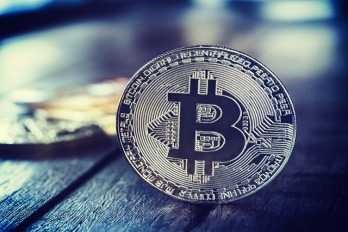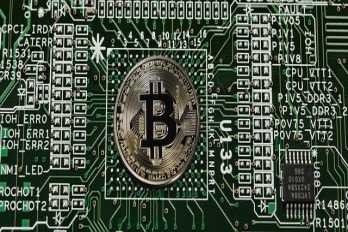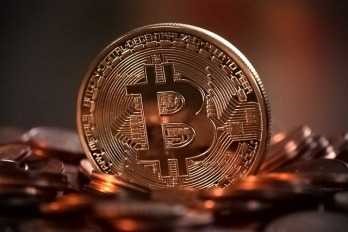SHIBA Inu coin is up on Coinbase on Tuesday, as is Bitcoin after Square CEO Jack Dorsey revealed the company is looking to get into crypto mining with that currency.
The best thing about the payments is Slush Pool’s famous score-based method of payments, which allows the awards to be distributed fairly among Bitcoin miners.
.
How mining works Mining requires a task that is very difficult to perform, but easy to verify. Bitcoin mining uses cryptography, with a hash function called double SHA-256. A hash takes a chunk of data as input and shrinks it down into a smaller hash value (in this case 256 bits). With a cryptographic hash, there's no way to get a hash value you want without trying a whole lot of inputs. But once you find an input that gives the value you want, it's easy for anyone to verify the hash. Thus, cryptographic hashing becomes a good way to implement the Bitcoin "proof-of-work". In more detail, to mine a block, you first collect the new transactions into a block. Then you hash the block to form a 256-bit block hash value. If the hash starts with enough zeros[3], the block has been successfully mined and is sent into the Bitcoin network and the hash becomes the identifier for the block. Most of the time the hash isn't successful, so you modify the block slightly and try again, over and over billions of times. About every 10 minutes someone will successfully mine a block, and the process starts over. The diagram below shows the structure of a specific block, and how it is hashed. The yellow part is the block header, and it is followed by the transactions that go into the block. The first transaction is the special coinbase transaction that grants the mining reward to the miner. The remaining transactions are standard Bitcoin transactions moving bitcoins around. If the hash of the header starts with enough zeros[3], the block is successfully mined. For the block below, the hash is successful: 0000000000000000e067a478024addfecdc93628978aa52d91fabd4292982a50 and the block became block #286819 in the blockchain. A short program to mine a block I wrote a Python program that mines the above block. The program itself is pretty simple - the hardest part of the code is computing the difficulty target from bits.[3] Otherwise it's just a loop over different nonce values. Each iteration puts the data into a structure, hashes it, and tests the result. The following table shows the hash obtained for selected nonce values. The key point is that each nonce generates a basically-random hash value. Every so often a "lucky" nonce will generate a hash starting with some zeroes. To get a lot of zeroes, you need to try an exponentially large number of nonces. For this block, the "winning" nonce is 856192328. noncehash 05c56c2883435b38aeba0e69fb2e0e3db3b22448d3e17b903d774dd5650796f76 128902a23a194dee94141d1b70102accd85fc2c1ead0901ba0e41ade90d38a08e 2729577af82250aaf9e44f70a72814cf56c16d430a878bf52fdaceeb7b4bd37f4 38491452381016cf80562ff489e492e00331de3553178c73c5169574000f1ed1c 3903fd5ff1048668cd3cde4f3fb5bde1ff306d26a4630f420c78df1e504e24f3c7 9900001e3a4583f4c6d81251e8d9901dbe0df74d7144300d7c03cab15eca04bd4bb 521170000642411733cd63264d3bedc046a5364ff3c77d2b37ca298ad8f1b5a9f05ba 181315200000c94a85b5c06c9b06ace1ba7c7f759e795715f399c9c1b1b7f5d387a319f 19745650000000cdccf49f13f5c3f14a2c12a56ae60e900c5e65bfe1cc24f038f0668a6c 2439898010000000ce99e2a00633ca958a16e17f30085a54f04667a5492db49bcae15d190 8561923280000000000000000e067a478024addfecdc93628978aa52d91fabd4292982a50 I should point out that I cheated by starting with a block that could be successfully mined. Most of the attempts to mine a block will fail entirely - none of the nonce values will succeed. In that case, you need to modify the block slightly and try again. The timestamp can be adjusted (which is why the timestamp in mined blocks is often wrong). New transactions can be added to the block, changing the Merkle hash. The coinbase transaction can be modified - this turns out to be very important for mining pools. Any of these changes will result in totally different hashes, so the nonce values can be tried again. My Python program does about 42,000 hashes per second, which is a million times slower than the hardware used by real miners. My program would take about 11 million years on average to mine a block from scratch.
Imagine that you have a machine that mines crypto coins. We’ll talk about the specific types of machines later on in the tutorial, but for example’s sake, let’s just say that it’s your own, personal computer and you’re trying to figure out how to mine cryptocurrency.
Sign up for Tips & Tricks newsletter for expert advice to get the most out of your technology.
3. If there's a disagreement of interest behind a referenced study, the reader must always be informed.

With cryptocurrencies entering the mainstream with a bang, more and more people every single day develop an interest in this new and strange world of blockchain. A lot of these people come to cryptos because they had heard that it’s possible to make money from them. If you’re one of those people, you’re in luck, because today I want to tell you how to mine cryptocurrency.
While most crypto mining operations in China could be considered legal grey areas, some are outright illegal, says Tang. In China’s impoverished central province of Ningxia, for example, subsidized power supplies designated for locals to process Goji berries as part of poverty alleviation efforts have been covertly syphoned off for sitcoin mining, he says.

By signing up you agree to receive email newsletters or updates from POLITICO and you agree to our privacy policy and terms of service. You can unsubscribe at any time and you can contact us here. This sign-up form is protected by reCAPTCHA and the Google Privacy Policy and Terms of Service apply. David Carlson: The Bitcoin Pioneer | Carlson, a former software engineer, is often credited with starting the basin’s bitcoin boom when he built one of the world’s first large-scale mines in an old furniture store in Wenatchee. “We’re where the blockchain goes from that virtual concept to something that’s real in the world, something that somebody had to build and is actually running,” he says. Here, Carlson stands in front of his latest mining endeavor, a megaproject made up of 24 prefabricated mining “pods.” | Patrick Cavan Brown for Politico Magazine
This new equipment sourced from a top global manufacturer is expected to be received and in operation by the end of February 2022 in 3 tranches, with 3,000 miners in December 2021, 3,100 miners in January 2022 and 400 miners in February 2022.

Another notable insurance policy that many businesses need is Workers’ Compensation Insurance. If your business will have employees, it’s a good chance that your state will require you to carry Workers' Compensation Coverage.
It enabled Bitmain to take remote access of any of their customers’ miners at any given time.

NOTE: the following are taken largely from Puppet's Cloud Mining 101 reddit post, which is a great supplement to this post.
GPU mining is probably the most popular and well-known method of mining cryptocurrencies. If you google “cryptocurrency mining”, GPU rigs are going to be some of the first things that you’ll see.

As can be seen in the table, none of the ASICs turn a profit at prices of $0.20 per KWh. The relative performance is mostly the same for each of the new-generation ASICs, while older models can be an attractive proposition if electricity is cheap.

Before you start mining Bitcoin, it's useful to understand what Bitcoin mining really means. Bitcoin mining is legal and is accomplished by running SHA256 double round hash verification processes in order to validate Bitcoin transactions and provide the requisite security for the public ledger of the Bitcoin network. The speed at which you mine Bitcoins is measured in hashes per second.

If you succeed in mining, you send the block to the Bitcoin network. Since the network is peer-to-peer, you send your successfully mined block to other computers (peers) in the Bitcoin network, who send it to other computers, until everyone has received it in a few seconds. Peers are always sharing blocks, which is how they get passed around the network, and there is nothing special about you sharing a block that you just mined versus a block that you received from someone else. Miners will then start using your block as the previous block for their mining, which is how your mined block becomes part of the blockchain.